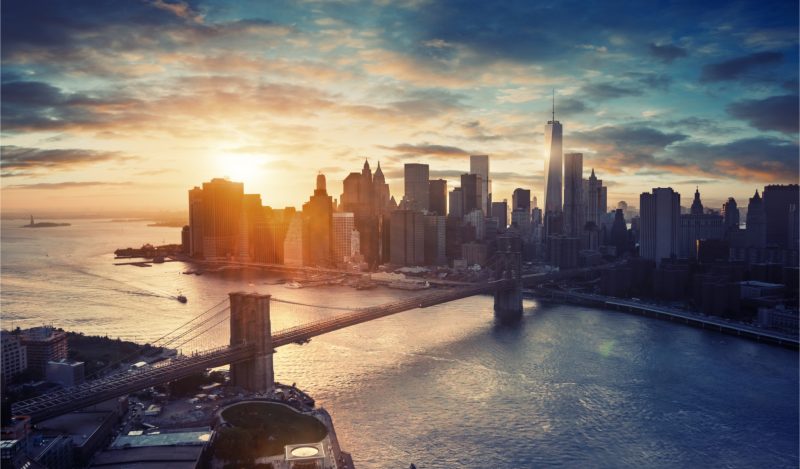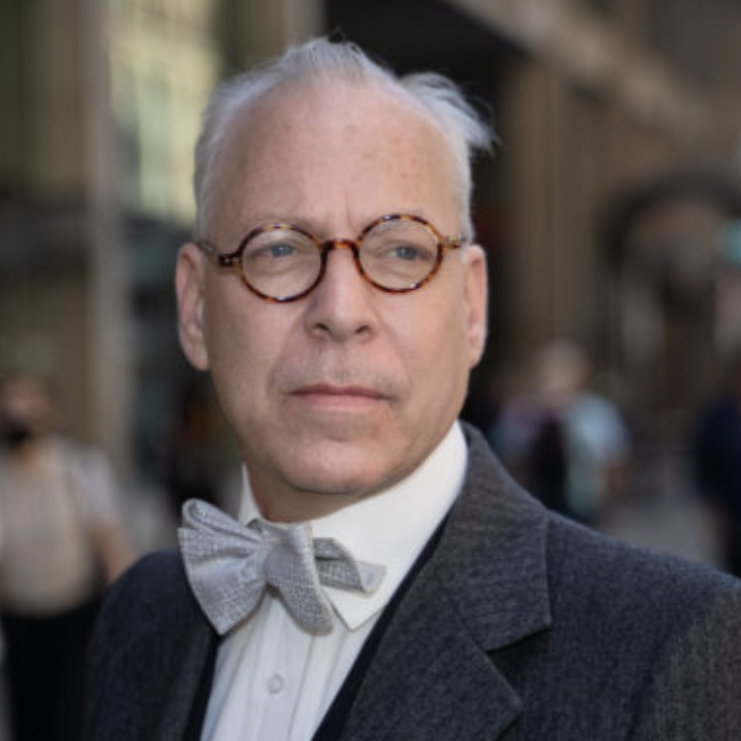To my mind, the New York Times bears a huge part of the responsibility for the catastrophic policy response to the Coronavirus. Starting on February 27, 2020, the paper reversed a century-old tradition of urging public calm, rational science, and good government to deal with pandemics. Instead, they used their podcast and editorial page to whip up public frenzy for lockdowns, even urging the whole country to “go Medieval” on the virus.
It was a terrifying abdication of journalistic responsibility.
That said, today the paper has some of the best and most evocative reporting on the tragic results of following their since-fired reporter’s grotesque advice. The once-great city of New York – an inspiring monument to human productivity, creativity, financial and artistic genius – is being harmed and devastated. Even this paper has noticed, and fills its pages with sad reports.
Is the destruction beyond repair? Probably not. But fixing it is going to require a wholesale reversal in direction: complete openness, an end to preposterous mandates and restrictions, and huge financial incentives to come would be a good start.
A friend of mine who lives in lower Manhattan in New York has had a front-row seat to the dismantling of the city he loves. It began with the lockdowns when the whole place emptied out, leaving it vulnerable to takeover by bums, vandals, and criminals. He barely escaped a mugging last summer. Still he was hopeful. Surely the city would return to normal once people wake up and realize the sheer stupidity of what’s happened.
Here we are 19 months later. Millions are still gone. Entire skyscrapers are empty. Retail outlets are still leaving. One never knows whether the vaccine mandate is going to be enforced. The outflow of people from the city to the suburbs, then from the suburbs to Florida is continuing. Ground-floor storefronts are available for a song, with one quarter empty in lower Manhattan and one third open in major tourist areas like Herald Square. Owners of huge office buildings still pay the mortgage, electricity, and taxes but the employees are not coming back.
Broadway is finally back and ticket sales seem solid. But other signs are not so bullish. The luxury furniture retailer ABC Carpet & Home has now filed for bankruptcy protection because of “a mass exodus of current and prospective customers leaving the city.”
My friend noticed a new sign in the subway. The old signs demanded a full face covering and staying away from people. The new sign demands that people on the subway not speak to each other. Instead, instructs the sign, people should just look at their phones. Detach from society. Be a big alienated collective. Stop with normal life, forever.
If you live in a place like Georgia, South Carolina, Texas, Florida, or many states in the Midwest, you are reading this with a sense of bewilderment. I might as well be describing life on Mars. But I promise you, it is all real.
In many places in the Northeast of the US, the Karens still patrol the grocery aisles, denouncing people without masks and telling people to stand further apart. The frenzy and hysteria is as intense now as ever – with people still imagining that their masks, plexiglass, and unrelenting terror somehow protects them against an enemy they cannot see. And this is after 19 months of this parade of grotesquery.
As for New York City itself, does it have a viable future? It certainly did a year ago, even six months ago. But it is getting very late in the day. The current structure cannot last under these conditions. In a few years, we could be observing scenes out of an apocalyptic novel, with skyscrapers crumbling and criminal gangs ruling the streets. It’s a grim prospect but it is increasingly difficult to imagine conditions under which things change enough to restore the city’s greatness.
I was in midtown Manhattan on March 12, 2020, the last moment before the beginning of the end. I had gone into the city with a friend to do a television interview. We had two more friends set to arrive the next day. We had tickets to a jazz club that Friday night, and all four of us were set to catch two Broadway shows the next day. I could tell upon arrival that Thursday morning that something was very wrong. The traffic flows were out, not in. People were scrambling through the streets as if preparing for a storm.
Sensing something very wrong, I made a call to tell my friends not to bother catching the flights to the city. Something was up, and they could be in danger. I knew from reading the federal regulations that at any point, governments could invoke their quarantine power. We could be grabbed off the trains, even out of cabs, and rounded up and put into Covid camps.
I told people this at the time, and people said I was losing my mind. Something like this could never happen in America.
My friends resisted my appeals for them not to board the plane to New York but finally acquiesced. I had a few hours before my interview and my friend and I hit the bar. It was a weird and wild scene. At 10:30am, the place was packed with revelers but of a special sort: the kind of people who drink themselves silly just before the end of the world. The scene was loud and raucous and strange. I did my interview, we hurried back to the trains, and the whole way home I worried that FEMA would stop the train and I would land in a concentration camp.
Sure, you could say I was crazy to fear government more than the virus, but now we see governments around the world building concentration camps exactly like that. Not in the US yet, but it is possible.
The Nation magazine, flagship of the left, has just published an editorial demanding a nationwide stay-at-home order from the Biden administration. It could happen. Plenty want this again, for strange even sadistically ideological reasons. These people completely ignore the failures of the lockdown regime so far – or rather excuse these failures has proof that the US did not lock down hard enough, fast enough, even though there is no successful case of this model having worked anywhere either.
Meanwhile, New York City is in shambles. You could look at all of this and say it is a prime example of human folly. We took on a textbook virus and used every political tool to try to crush it. Instead we crushed civilization itself, while the virus thrived happily and undisturbed in its trajectory. Meanwhile, the greatest achievements in human history are being systematically dismantled.
And yet, I’m looking at an article published in Cell in August 2020 by Anthony Fauci. The thing haunts me. It seems obsessed with Cholera, which “became pandemic only because of human crowding and international travel, which allowed new access of the bacteria in regional Asian ecosystems to the unsanitary water and sewer systems that characterized cities throughout the Western world.”
Yes, fine but Fauci seems not to have noticed that we figured out how to control Cholera, not by ending crowding and travel but through clean water and good sanitation. In other words, civilization got better at managing pathogens, and the coevolution of humans and viruses gradually moved toward a general tendency toward endemicity. We did this not by crushing human rights and freedom but by expanding them. Technology helped clean up the world, even as our immune systems adapted to more human contact.
Which is to say: the system of human rights and freedom over time became beautifully aligned with the demands of public health. It was through the decentralized exercise of human intelligence, not central planning, much less the creation of a biomedical fascist state, that the world became progressively healthier.
Fauci and his co-author reject this completely in favor of “rebuilding the infrastructures of human existence, from cities to homes to workplaces, to water and sewer systems, to recreational and gatherings venues.”
It’s a wild and radical vision. Once you use your decoder ring, cut through the thicket of pseudo-academic promises what you find in this article are three main points: 1) we need to get rid of large cities because human contact spreads disease, 2) we need to curb or end international travel because that spreads disease, and 3) we need government to control our lives completely because we all do things that spread disease.
So I’m looking at this article and noticing something. One third of nations in the world today are shut to international travel. Our cities are being wrecked – at least those that are controlled by people who listened to Fauci. And our lives are being managed to the smallest degree now by people who think nothing of mandating all of us to take medicine we do not desire nor need.
Now, when you look at these bits of information and you notice certain outcomes and then you notice that a very powerful man – in some ways the world’s most powerful man – has penned an article pushing these very outcomes, you have to start asking questions. At what point do we start to describe the wreckage all around us as the intentional fulfilment of an intellectual vision – a vicious and malicious vision that hates freedom and despises the modern world?
The primitivist/communist view of human life has always detested the city. Think back on Mao’s campaign to disperse the population into rural areas and depopulate urban centers. And think about how China daily controls people through technology and propaganda designed to crush individualism. There is that impulse at work among those who created lockdowns and continue their plans for mandates and restrictions.
One of the goals of creating chaos is to make it impossible to notice details. If, for example, your goal is to destroy the greatest city in the world, you would need an environment of cacophonous confusion to distract people from what was happening. That seems like a pretty good description of the last 19 months.
We find ourselves in an emergency situation. The world is tottering between two visions of human life. One centers on freedom and all its creativity, including cities, arts, friendships, technology, and great lives. The other centers on despotism and the relentless drive back to a state of nature: foraging for food, living in rural settings, stuck in one place, and dying young.
Prosperity and human happiness cannot survive the second view. And yet the world’s most powerful people are today surreptitiously pushing it in their academic articles. A presentation at the World Economic Forum famously sums it up: “You’ll own nothing and you’ll be happy.” The first part is possible. If that happens, the second part is impossible.
Join the conversation:


Published under a Creative Commons Attribution 4.0 International License
For reprints, please set the canonical link back to the original Brownstone Institute Article and Author.









